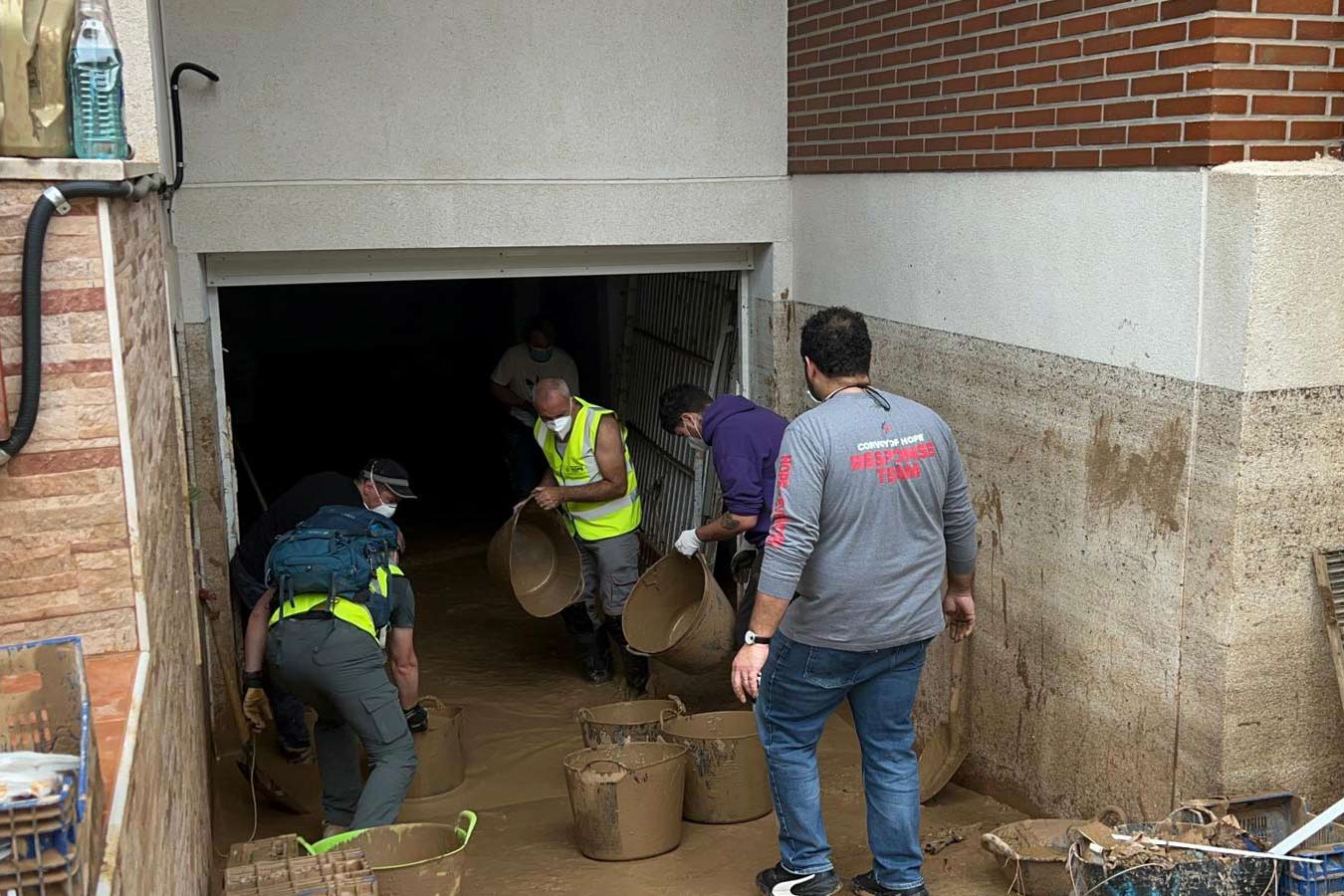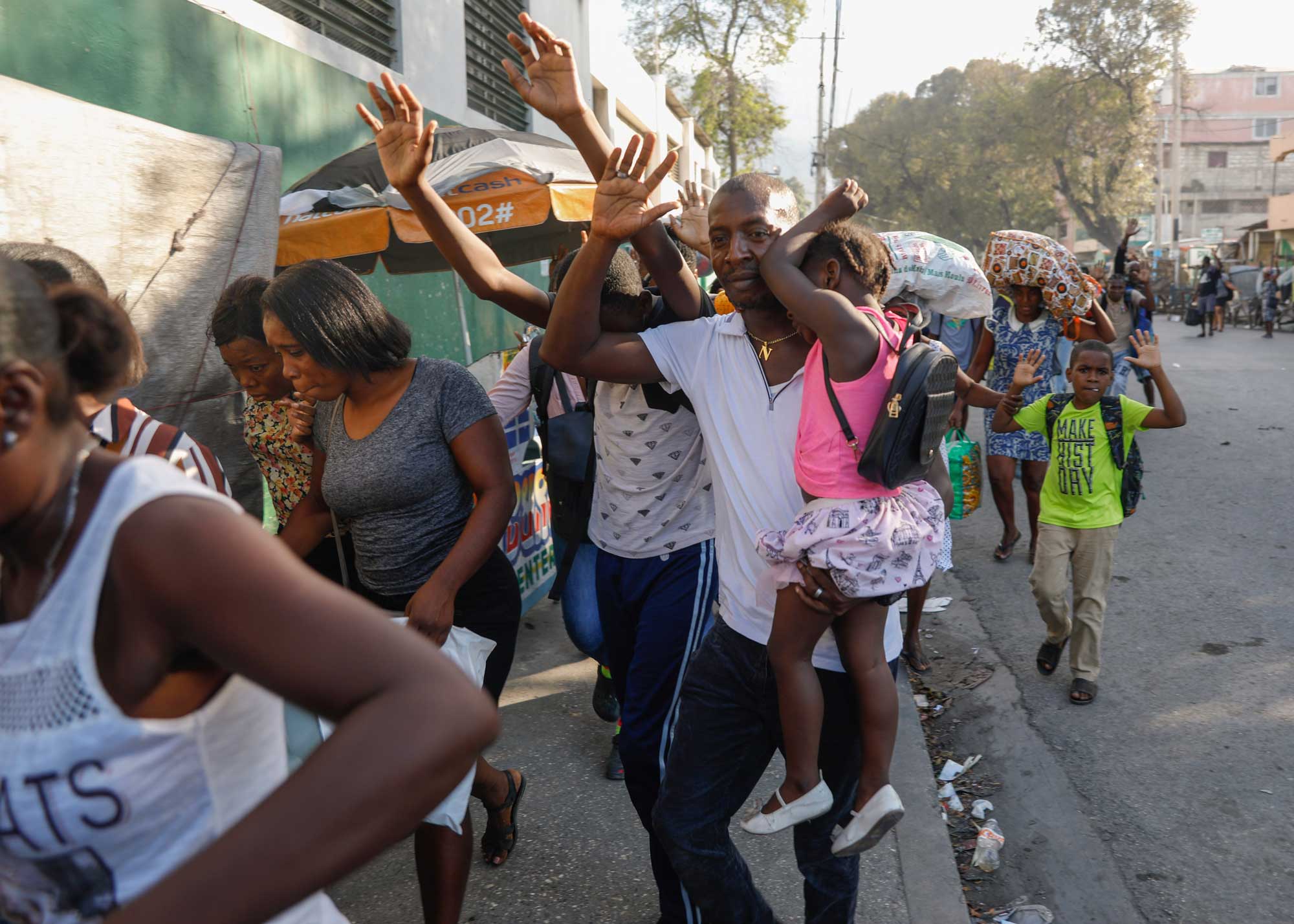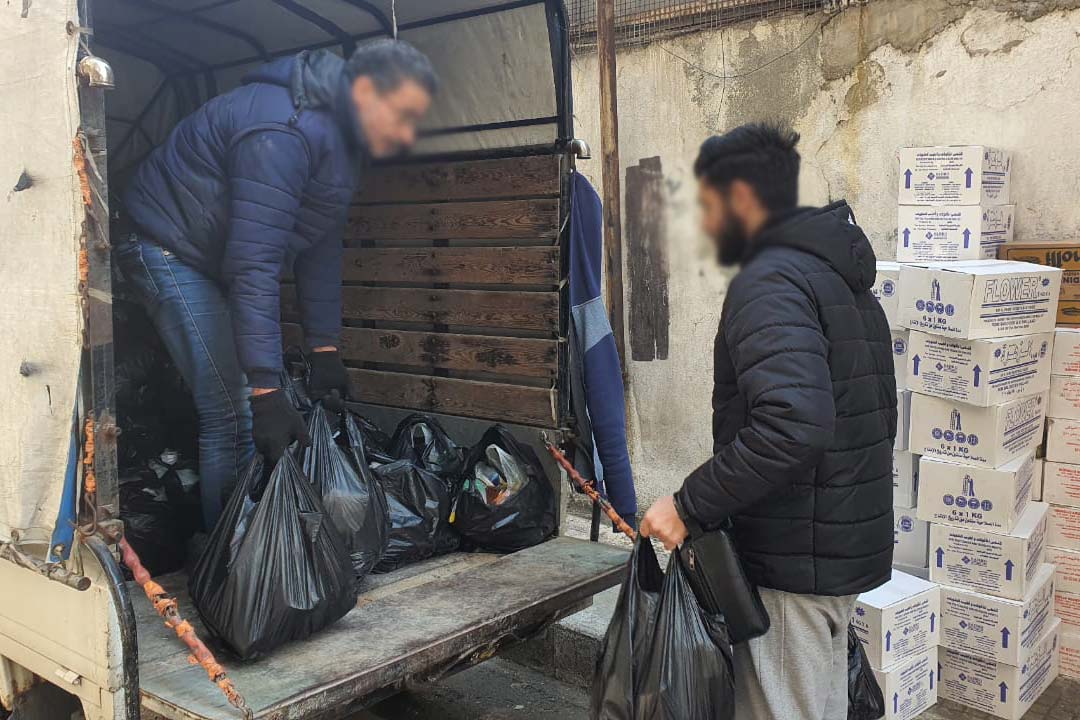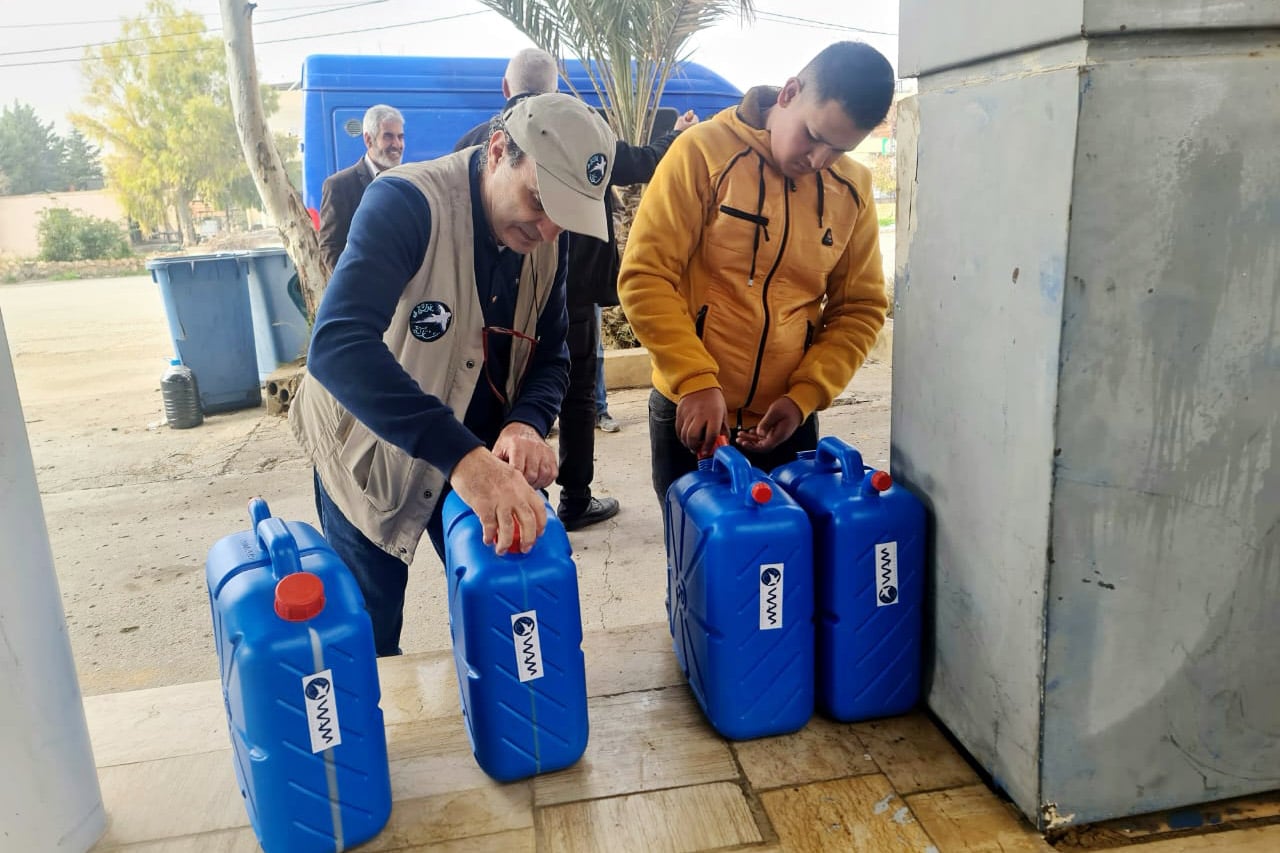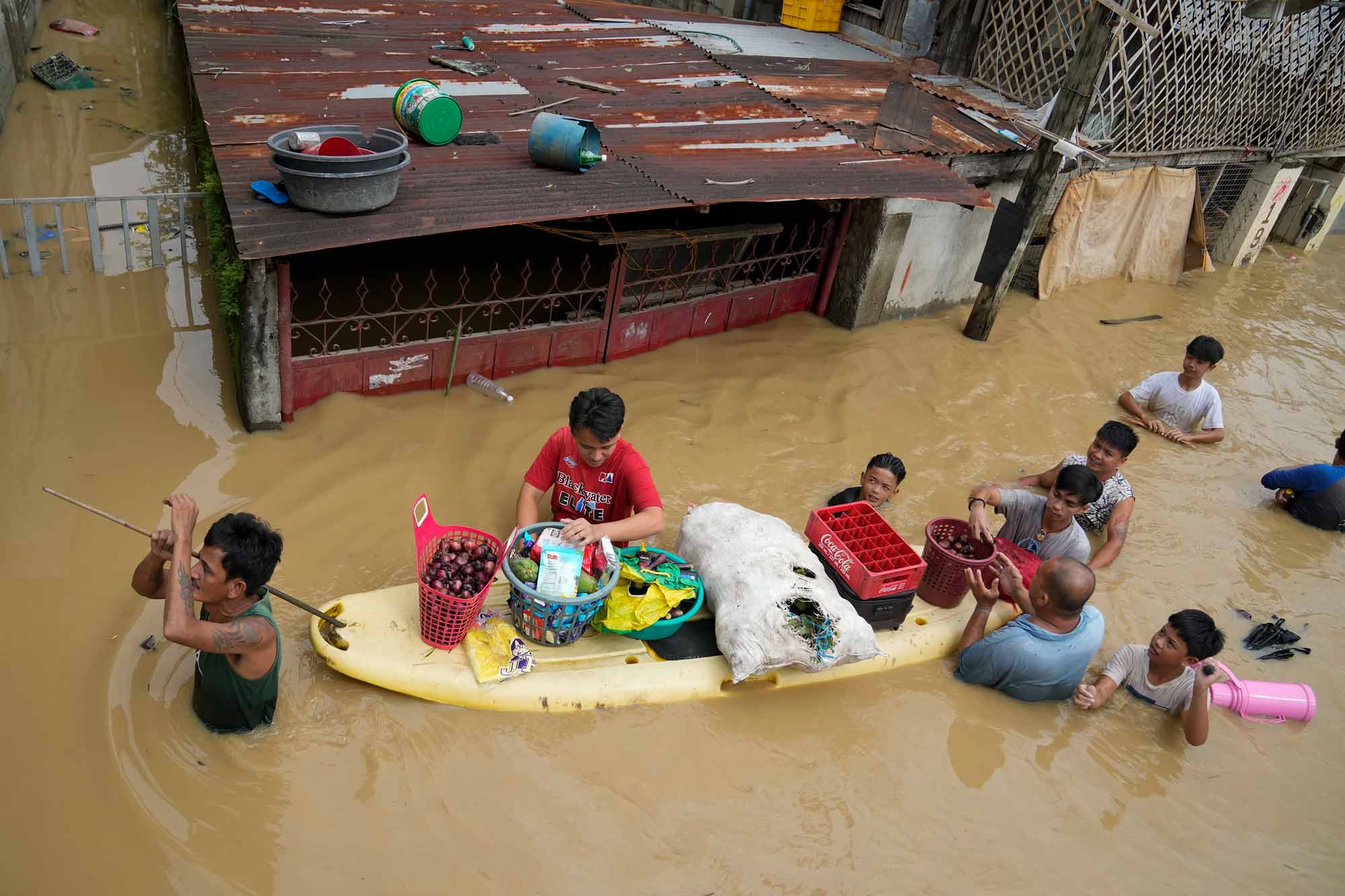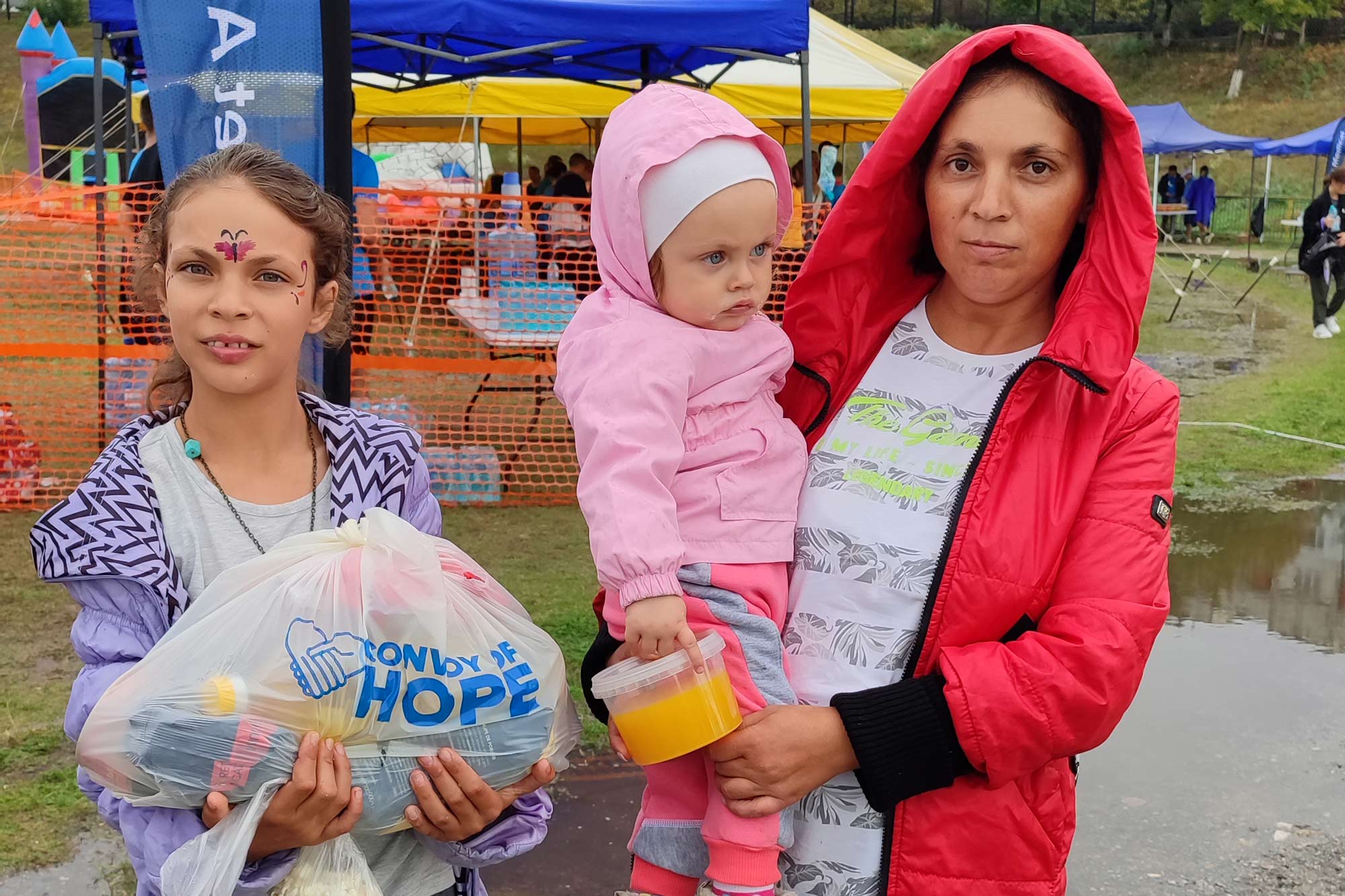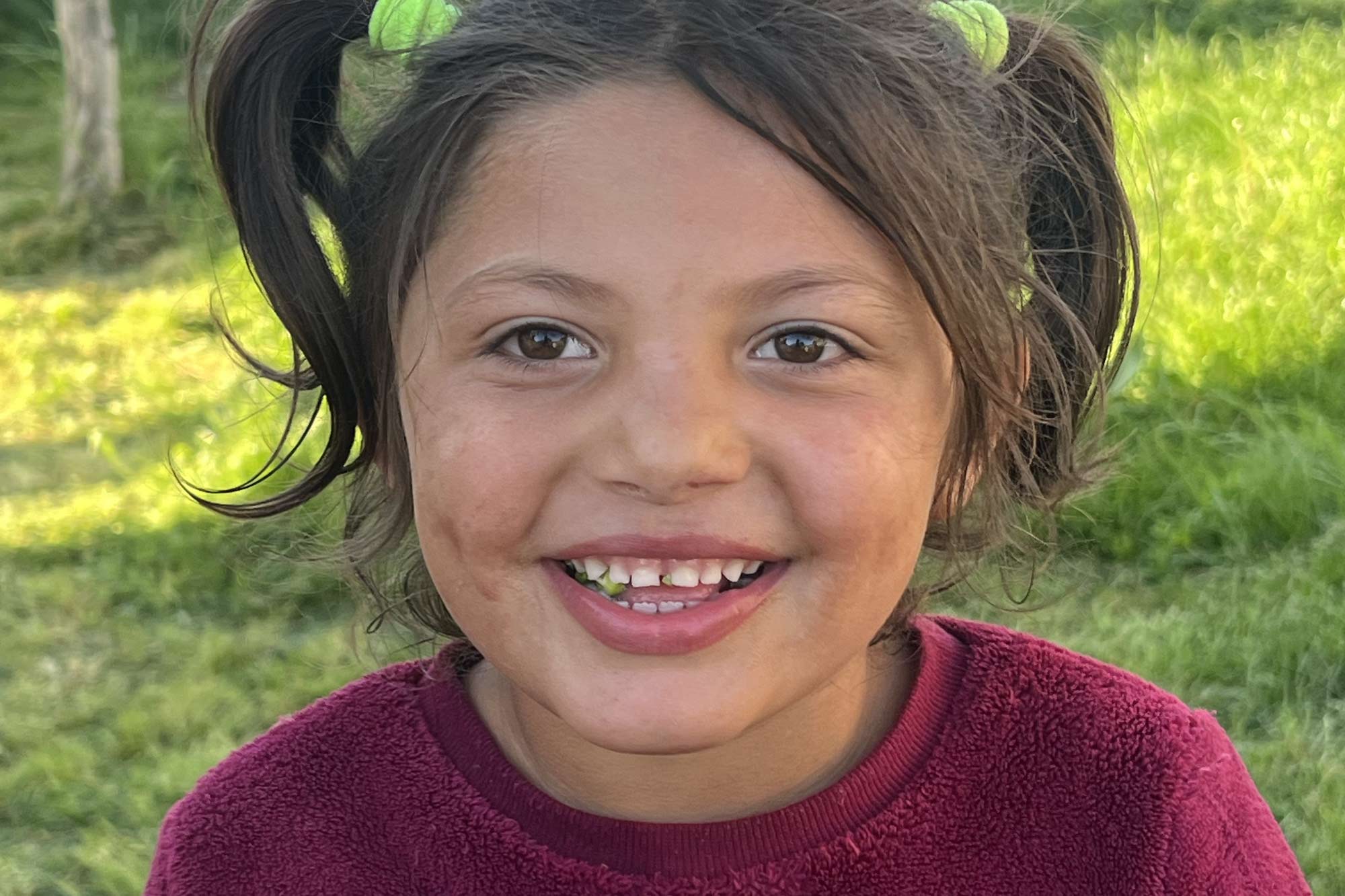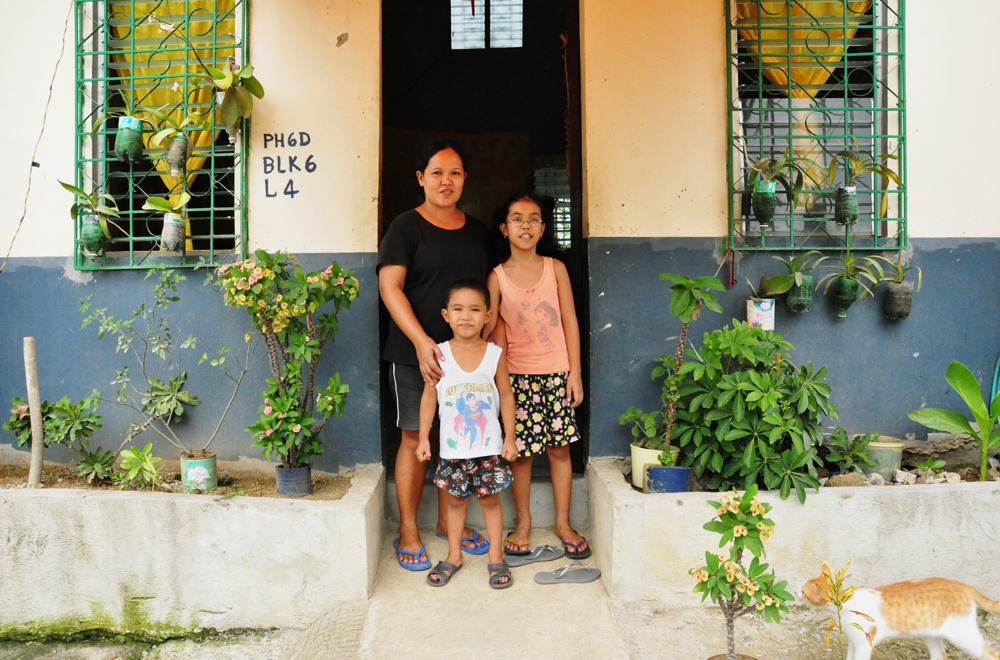
In a rural area of the Philippine province of Bulacan, a group of women hover over a steaming pot of rice and vegetables. With great care, pride, and wide smiles the women divide the food into equal portions for the 25 children who eagerly await lunch. This day marks the first that Convoy of Hope is serving meals as part of a newly-launched neighborhood lunch program.
“I am happy,” says Alexa, a third-grader who was chosen for the program based on her relative risk for malnutrition. “Now I can eat here every day!”

Being enrolled in the program is big news for Alexa and the 24 other children who were enrolled in this vulnerable community because now they don’t have to worry about going hungry or being undernourished.
“Without the nourishing meals that our partners and supporters provide, children like Alexa would more likely go hungry and suffer from undernourishment,” says Kevin Rose, Senior Director of International Program Operations. “As children go back to school, these meals are going to give children energy and the ability to pay attention and learn.”
Alexa lives with her mother, Isabel, and 5-year-old brother, Alejandro. On a yellow-painted wall of their home, a pair of boxing mitts hangs beside a picture of Manny Pacquiao, the Filipino boxing legend whose rags-to-riches story has become a symbol of hope to the country’s poor. “He is our hero,” Isabel says with a smile.
Despite the optimism, the family’s dire situation becomes clear as Isabel shares their story. She says her family was forced to relocate here two years ago when they were evicted from their home so a road could be built.
Though their housing situation has improved, there is little work in this remote community, so Isabel’s husband works in Manila during the week as a welder. The job pays just 4,000 pesos ($100) per month, and business isn’t always steady. Tears well up in Isabel’s dark eyes when she admits they can’t always afford to feed their children.
Convoy of Hope’s feeding programs are vital for cash-strapped families like Alexa’s.
“There are a lot of children who need Convoy of Hope’s help,” a local church pastor explains.
Raul Manuel, Philippines National Director, explains that apart from decent housing, providing food security is one of the biggest contributions to a family’s well-being and dignity that an organization like Convoy of Hope can make.
“Through our various programs, we want to be able to help people get on their feet,” he says. “The nutritious food we can provide them through our feeding programs is a great first step.”
As schools in the Philippines prepare to open again for the 2014-2015 school year, Convoy of Hope plans to feed more than 24,000 children and an additional 7,000 at program centers throughout the country.
“Hearing success stories like Alexa’s is thanks to our partners and supporters,” says Rose. “They are making the difference!”
Thanks to the partners and supporters that Rose speaks of Convoy of Hope is ready to help children return to school in 11 countries where it works.
“In Haiti for example, where we have more children enrolled in our Children’s Feeding initiative than any other, we’re prepared to continue feeding more than 61,000 children there,” he says. “The children know that when they come to school, they’re going to get a hot meal.”
Rose points to a community about a half hour drive from the crowded, sometimes chaotic streets of Port-au-Prince. There, in the community of Courjolle, a majority of the residents live below the poverty line (less than $2.00 a day) and most residents have no access to safe water or legal electricity. Many schools in this area are poor-standing structures with dirt floors and due to the scarcity of food for most families it’s very difficult for children to stay focused while in school.
In Courjolle, at Institution Mixte Mamaliga, a school supported by Convoy of Hope and partner Mission of Hope Haiti, just last school year the number of children being fed nearly doubled.
“At the beginning of the school year, we were feeding 500 children a day at Mixte Mamaliga,” says a Mission of Hope team member. “By the end of the year, we were feeding 964 children and we’ve seen a significant change in the educational progress and well-being of the students.”
Pickering adds that since the expansion of the program at the school, students have been more motivated to attend class and, in turn, government test scores have improved. For Rose, that’s an exciting prospect.
“By providing nutritious meals to hungry children we’re changing the courses of their futures,” he says. “For many of the children who have recently been enrolled in our feeding initiative this will be the best year yet of their young lives!”

